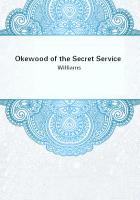Responsible government was Baldwin's one and absorbing idea, and his persistence led to its ultimate adoption, along with a proposal for an elective Council, in the Reform party's programme in 1834.Delay in affecting this reform, Baldwin told the Governor a year later, was "the great and all absorbing grievance before which all others sank into insignificance." The remedy could be applied "without in the least entrenching upon the just and necessary prerogatives of the Crown, which I consider, when administered by the Lieutenant.Governor through the medium of a provincial ministry responsible to the provincial parliament, to be an essential part of the constitution of the province." In brief, Baldwin insisted that Simcoe's rhetorical outburst in 1791, when he declared that Upper Canada was "a perfect Image and Transcript of the British Government and Constitution," should be made effective in practice.
The course of the conflict between the Compact and the Reformers cannot be followed in detail.It had elements of tragedy, as when Gourlay was hounded into prison, where he was broken in health and shattered in mind, and then exiled from the province for criticism of the Government which was certainly no more severe than now appears every day in Opposition newspapers.The conflict had elements of the ludicrous, too, as when Captain Matthews was ordered by his military superiors to return to England because in the unrestrained festivities of New Year's Eve he had called on a strolling troupe to play Yankee Doodle and had shouted to the company, "Hats off"; or when Governor Maitland overturned fourteen feet of the Brock Monument to remove a copy of Mackenzie's journal, the "Colonial Advocate", which had inadvertently been included in the corner stone.
The weapons of the Reformers were the platform, the press, and investigations and reports by parliamentary committees.The Compact hit back in its own way.Every critic was denounced as a traitor.Offending editors were put in the pillory.Mackenzie was five times expelled from the House, only to be returned five times by his stubborn supporters.Matters were at a deadlock, and it became clear either that the British Parliament, which alone could amend the Constitution, must intervene or else that the Reformers would be driven to desperate paths.But before matters came to this pass, an acute crisis had arisen in Lower Canada which had its effect on all the provinces.
In Lower Canada, the conflict which had been smoldering before the war had since then burst into flame.The issues of this conflict were more clearcut than in any of the other provinces.Acoherent opposition had formed earlier, and from beginning to end it dominated the Assembly.The governing forces were outwardly much the same as in Upper Canada--a Lieutenant Governor responsible to the Colonial Office, an Executive Council appointed by the Crown but coming to have the independent power of a well-entrenched bureaucracy, and a Legislative Council nominated by the Crown and, until nearly the end of the period, composed chiefly of the same men who served in the Executive.The little clique in control had much less popular backing than the Family Compact of Upper Canada and were of lower caliber.Robert Christie, an English-speaking member of the Assembly, who may be counted an unprejudiced witness since he was four times expelled by the majority in that house, refers to the real rulers of the province as "a few rapacious, overbearing, and irresponsible officials, without stake or other connexion in the country than their interests." At their head stood Jonathan Sewell, a Massachusetts Loyalist who had come to Lower Canada by way of New Brunswick in 1789, and who for over forty years as Attorney General, Chief Justice, or member of Executive and Legislative Councils, was the power behind the throne.
The opposition to the bureaucrats at first included both English and French elements, but the English minority were pulled in contrary ways.Their antecedents were not such as to lead them to accept meekly either the political or the social pretensions of the "Chateau Clique"; the American settlers in the Eastern Townships, and the Scotch and American merchants who were building up Quebec and Montreal, had called for self-government, not government from above.Yet their racial and religious prejudices were strong and made them unwilling to accept in place of the bureaucrats the dominance of an unprogressive habitant majority.The first leader of the opposition which developed in the Assembly after the War of 1812 was James Stuart, the son of the leading Anglican clergyman of his day, but he soon fell away and became a mainstay of the bureaucracy.His brother Andrew, however, kept up for many years longer a more disinterested fight.Another Scot, John Neilson, editor of the Quebec "Gazette", was until 1833 foremost among the assailants of the bureaucracy.But steadily, as the extreme nationalist claims of the French-speaking majority provoked reprisals and as the conviction grew upon the minority that they would never be anything but a minority,* most of them accepted clique rule as a lesser evil than "rule by priest and demagogue."* The natural increase of the French-Canadian race under British rule is one of the most extraordinary phenomena in social history.The following figures illustrate the rate of that increase: the number was 16,417 in 1706; 69,810 in 1765; 479,288in 1825; 697,084 in 1844.The population of Canada East or Lower Canada in 1844 was made up as follows: French Canadians, 524,244;English Canadians.85,660; English, 11,895; Irish, 43,982;Scotch, 13,393; Americans, 11,946; born in other countries, 1329;place of birth not specified, 4635.















